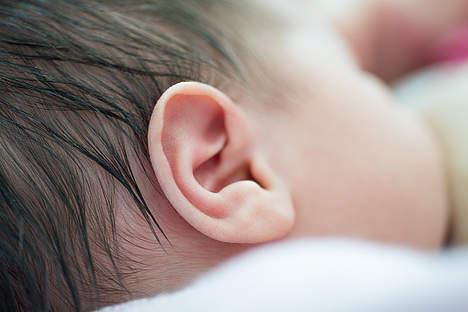 Together with researchers at the Medical School in Harvard, Boston, Lukas Landegger of MedUni Vienna’s Department of Ear, Nose and Throat Diseases has now succeeded, for the very first time, to repair this defect in an animal model — by using a modified,
Together with researchers at the Medical School in Harvard, Boston, Lukas Landegger of MedUni Vienna’s Department of Ear, Nose and Throat Diseases has now succeeded, for the very first time, to repair this defect in an animal model — by using a modified,
The study has been published in the leading journal «Nature Biotechnology». Lukas Landegger is doing his PhD at MedUni Vienna and is currently working at Harvard as part of his course.
At the moment, ENT experts are able to use cochlea implants as a technical solution for restoring the hearing of people with congenital hearing loss. The Medical University of Vienna has been a global leader in the development and use of cochlear implants since 1977, when the world’s first multichannel cochlear implant was implanted in Vienna. «However, these electronic implants with their twelve electrodes cannot 100% replace the more than 3,000 hair cells in the inner ear, which give as much finer hearing," says Wolfgang Gstöttner, Head of the ENT Department at MedUni Vienna.
Adeno-associated virus as a gene vector
The commonest form of congenital deafness in children is due to the genetic mutation of GJB2 and GJB6. This mutation prevents the protein connexin 26, which is responsible for the cells in the cell complex of the inner ear, from working properly. As a result, the small hairs in the cochlea do not form properly or do not function properly. However, so far
Once the functionality of the virus had been initially proven in the treatment of a mouse model for Usher syndrome, which is the commonest cause of deafblindness worldwide (Pan et al. Nat Biotechnol 2017), further studies are required to determine the tolerability of the vector, so that this approach will soon be available for treating newborn babies with congenital hearing loss.


